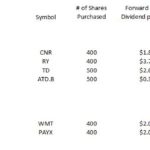Market Volatility has certainly picked up recently. Look at the iPath S&P 500 VIX ST Futures ETN (VXX). Set the interval as weekly and look at different date ranges starting from the maximum date range and work your way down to the last 3 months. Note the spike commencing early February.
The VXX is an investment instrument which seeks to provide investors with exposure to the S&P 500 VIX Short-Term Futures™ Index Total Return. It is designed to provide access to equity market volatility through CBOE Volatility Index® futures and offers exposure to a daily rolling long position in the first and second month VIX futures contracts and reflects the implied volatility of the S&P 500® at various points along the volatility forward curve.
While some investors will make out like bandits from this heightened volatility, there are going to be many who will be caught on the wrong side of the equation. Those less fortunate and who have employed the use of leverage will need to make very quick decisions before someone else makes those decisions for them (ie. margin calls).
This graph shows margin debt inverted so that we see the relationship between the S&P500 and margin debt as a divergence.
While we will very likely experience a period of heightened volatility for the foreseeable future, I recently wrote that I Invest With a Long-Term Outlook. In that article I wrote that ‘My Crystal Ball is Broken’ and I know I will not always catch the best price. This is why I:
- have specifically decided to focus on investing in companies with sustainable competitive advantages, solid management, and strong financials;
- simply buy and hold (not buy and forget);
- do not try to time the market.
I am, therefore, constantly on the lookout for companies which I view as at least reasonably valued.
In this regard, I have made a few investments subsequent to the start of heightened volatility at the beginning of February 2018. These investments are reflected in the following chart; all of the companies reflected in the chart are companies I have recently analyzed.
 In some cases the retracement in equity prices has been the result of what were previously inflated valuation levels. In other cases, companies have experienced short-term challenges (eg. an insufficient number of locomotives, engineers thus resulting in delays in grain shipments) (CNR) or non-recurring negative events (eg. hurricanes in Texas in late 2017) (ATD.B). The long-term outlook for these companies, however, is positive.
In some cases the retracement in equity prices has been the result of what were previously inflated valuation levels. In other cases, companies have experienced short-term challenges (eg. an insufficient number of locomotives, engineers thus resulting in delays in grain shipments) (CNR) or non-recurring negative events (eg. hurricanes in Texas in late 2017) (ATD.B). The long-term outlook for these companies, however, is positive.
In my Invest With A Long-Term Outlook article I explained why I avoid speculative investments. As you can see from the names reflected in the chart above, these are not speculative companies.
These are companies I have analyzed in 2018.
- Honeywell
- Becton Dickinson
- Fastenal
- Bank of New York Mellon
- Canadian National Railway
- Union Pacific
- United Technologies
- Stanley Black & Decker
- Automatic data Processing
- UPS
- MasterCard
- VISA
- Hershey
- Church & Dwight
- Broadridge
- Pepsico
- Brookfield Asset Management
- Coca-Cola
- Walmart
- Genuine Parts
- Hormel
- Moody’s
- S&P Global Inc.
- McCormick
- Disney
- Ecolab
- Alimentation Couche-Tard
- FedEx
- Nike
- Paychex
In addition I wrote a guest post on the Big 6 Canadian banks.
NOTE: Not all companies were recommended as immediate ‘buys’.
Some of the companies have sub 1% dividend yields and will have little appeal to investors focused exclusively on dividend income.
While I certainly appreciate dividend income since that is one of my sources of income during retirement, I am not focused exclusively on dividend income. I seek long-term wealth creation, and therefore, I prefer to let management of well run companies determine the most efficient use of capital so as to maximize shareholder value.
In addition, I am not preoccupied where a company’s stock price will be in the short-term. I am not a technical analyst. I don’t stare at my computer screen all day long watching stock charts. Frankly, I don’t pay any attention to 50-day and 200-day moving averages. This is far too much work and I strongly suspect that some of the world’s best investors (eg. Warren Buffett, Charlie Munger, Seth Klarman, George Soros, and Joel Greenblatt) do not stare at computer screens all day long.
If my investment philosophy meshes with your investment philosophy then perhaps becoming a member of the FFJ community might be of interest to you.
In an effort to help you determine whether being a member of the FFJ community is worthwhile, I am pleased to offer 30 days' free access to all sections of my site. No commitments. No obligations. That's 30 days from the time you register at absolutely no cost to you!
I wish you much success on your journey to financial freedom.
Thanks for reading!
Note: I sincerely appreciate the time you took to read this article. Please send any feedback, corrections, or questions to [email protected]
Disclaimer: I have no knowledge of your individual circumstances and am not providing individualized advice or recommendations. I encourage you not to make any investment decision without conducting your own research and due diligence. You should also consult your financial advisor about your specific situation.
I wrote this article myself and it expresses my own opinions. I am not receiving compensation for it and have no business relationship with any company whose stock is mentioned in this article.



